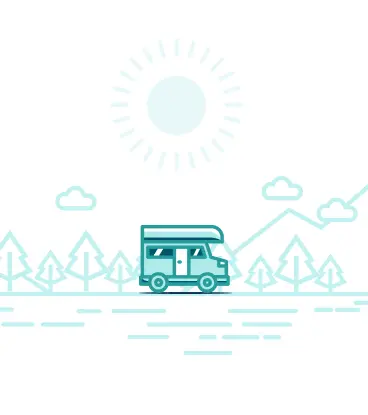
Know Before You Go, Shaka Guide's Joshua Tree Tour

Joshua Tree National Park is a rising star within the National Park Service, with attendance growing rapidly!
People flock to this remote desert park to enjoy the unusual plant life, climb around the exciting rock formations, hike the stunning, open terrain, and stargaze in the dark night sky.
So get ready to enjoy this unique gem the Shaka Guide way, with fun stories and contextual information that will add perspective and entertainment to your Joshua Tree experience.
Here are a few things you should know about the tour before you get started.
Start Planning
 Tuxyso / Wikimedia Commons
Tuxyso / Wikimedia Commons
- Joshua Tree National Park is open 24/7, 365 days a year.
- The visitor centers have varying hours. Learn more here.
- The tour begins on Interstate 10 and you’ll use the park’s southern entrance.
- The entry fee is $30/vehicle, $25/motorcycle, and $15/individual on foot or bicycle, good for 7 days.
- With the park’s growing popularity, weekends can see droves of cars, with long waits to enter the park and crowded parking lots. Plan to arrive early, before 9 a.m., or plan to visit on a weekday to avoid traffic.
- There are no restaurants or places to buy food inside the park.
- Bring plenty of water! Enough for everyone to refill their water bottle a couple of times.
- This tour takes between 3-4 hours without stops. If you’re stopping, plan to spend most of the day, or even two days exploring the park.
- The park experiences extreme heat during the summer. Plan accordingly, and have realistic expectations of what you’d like to do based on the weather. Wear layers for sun protection in the desert but also note that in winter it can be quite cold, especially at night.
- If you plan to camp in the park, be aware that some campgrounds require a reservation while others are first come, first served.
What to Expect
 Hannah Schwalbe, while working for Joshua Tree National Park, Public domain, via Wikimedia Commons
Hannah Schwalbe, while working for Joshua Tree National Park, Public domain, via Wikimedia Commons
To See Incredible Desert Vistas
The best time to experience Joshua Tree National Park depends on what you plan to do.
Photographers tend to enjoy it most in the early morning and late evening, when the sky’s colors dazzle and make for spectacular backdrops.
If you’re hiking, however, it’s best to go in the morning so there’s plenty of daylight while you’re on the trail.
It’s also cooler in the morning before 10 a.m. But with unobstructed views throughout the tour, you’ll be entranced by the open desert landscape.
To Spend a Half or Whole Day Here
Unless you’re going to just drive through, stopping only for the briefest of selfies before heading on, you’ll want to spend some time in the rock gardens.
Even if you’re a non-hiker, allow a bit of time on some of the easier trails, as there’s a lot to see and learn.
Moderate to serious hikers will likely want to do Ryan Mountain, and perhaps even head to Lost Palms.
The latter hike will mean the tour takes most of the day, or that you'll want to split the tour between two days.
To Be Active
There’s a lot to see here, and some of the nicest viewpoints and some of the coolest attractions require a bit of trail walking.
And half of the fun of the rock formations is, well, climbing around!
Wear good-fitting, comfortable shoes, and clothes that protect from the sun, and again, pack plenty of water.
To Learn About the Environment
One of the most fascinating things about Joshua Tree is its spectacular natural beauty.
You will see lots of interpretive signs with great information, and our tour picks up where they leave off to give you an in-depth understanding of why this beautiful place deserves a spot in your heart.
To be Awed by Joshua Trees
The iconic Joshua Trees look strange, but when you learn about them, they’re even stranger.
Their relationship with the giant extinct Shasta ground sloth, their need for pollination by a particular species of moth, and their unique shape all make for one of the most interesting plants in the world.
Budgeting
 m01229 from USA, CC BY-SA 2.0, via Wikimedia Commons
m01229 from USA, CC BY-SA 2.0, via Wikimedia Commons
Of course, a lot of the costs will depend on what you choose to do, what you want to eat, and so on. But here are our estimates to help you plan:
- Park entry: $30/car
- Lunch: $10-15/person
- Water for the group: $5
- Snacks: $8-15
- Gifts/Souvenirs: $20-50
Safety Information
 Joshua Tree National Park, Public domain, via Wikimedia Commons
Joshua Tree National Park, Public domain, via Wikimedia Commons
For the most part, you’ll be doing things that are fun and safe for all ages, but keep a few important things in mind:
- Water: Bring plenty of water and drink it. Dehydration can happen long before you’re really thirsty.
- Sun: Wear protective clothing and use sunscreen. Many of the trails have no shade.
- Cacti: Getting poked is no joke. Wear closed-toed shoes with good soles and be careful to protect leashed pets.
- Snow/Ice: In winter, frostbite and hypothermia can occur, so be sure to wear appropriate clothing. Drivers, be aware that roads are sometimes closed and conditions can change quickly.
- Road hazards: Go slow at all times. Always obey speed limits. Look for animals crossing. Check with the rangers for up-to-date closure information.
- Animals: Keep a safe distance from any wildlife you encounter, including rattlesnakes and scorpions, for their sake and yours.
- Pets: Leashed pets are not allowed on the trails, and it’s a bad idea to bring pets as they can easily step on painful cactus spines. You are not allowed to have a pet unattended in the car, even if the motor is running.
Start Packing!
 NPS Photo
NPS Photo
Here’s our packing list for this tour. It may seem a little long, but remember, what you bring depends on the activities you choose to do for the day.
- Phone Car Mount and Charger *Very Important*
- Sneakers/Hiking shoes
- Hiking Clothes
- Water Bottle, and extra water (1 gallon per person, per day)
- Bug Spray
- Sunscreen
- Sunglasses and hat
- Hand sanitizer
- Snacks
- Cash
- Binoculars
- Layers - it can get cold
Leave No Trace
 NPS photo
NPS photo
Here at Shaka Guide, we promote ways we can preserve special places, like our national parks, for future generations.
Please pick up your trash, leave plant and animal life as you find it, and stick to marked trails.
In this way, generations to come can enjoy Joshua Tree National Park.
Like this article? Share it on Pinterest!

Ready to take the tour? Check out Shaka Guide's Joshua Tree National Park Tour!
We hope that we’ve given you all the information you need to make the most of your day. Your vacation is extremely important to us so if you have any questions feel free to reach out at aloha@shakaguide.com.
For more detailed information to help you plan check out our Joshua Tree National Park Itinerary.
RELATED ARTICLES:
When's the Best Time to Visit Joshua Tree?

Matt Caracciolo is a travel writer based in Ohio and author of the Shaka Guide tour for Yosemite. Born and raised in Columbus, Matt fell into travel writing while teaching English abroad in South Korea.
He has written two travel books, including the Moon Ohio guidebook, and enjoys writing and editing tours for Shaka Guide. Matt follows Mark Twain’s belief that “travel is fatal,” embracing travel as a way to learn more about the world and ourselves.




























 to fuel your ride
to fuel your ride 
